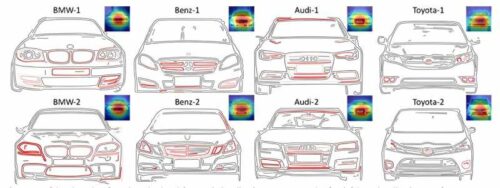With the potential to save significant time for domain experts and the promise of extending its capabilities to 3D imaging, BIGNet is set to redefine the landscape of product design and brand consistency, marking a historic breakthrough in the field.

In a groundbreaking development in the field of product design, researchers at Carnegie Mellon University have introduced an automated deep learning architecture named BIGNet, short for Brand Identification Graph Neural Network. The technology aims to revolutionize brand consistency across product lines, streamlining the design process and fostering a positive impact on profits. Unlike traditional methods, BIGNet utilizes fully automated deep learning to identify visual brand-related features. The model is trained using SVG images of products, allowing it to pinpoint consistencies among thousands of curves on product images to identify the visual brand accurately.
In extensive testing, BIGNet exhibited exceptional accuracy, achieving a 100% success rate in differentiating between popular cell phone brands such as Apple and Samsung. The model identified specific features, including screen gaps and camera lens locations, crucial in distinguishing one brand from another. The researchers also demonstrated the versatility of BIGNet across various products by evaluating its performance against 10 automotive brands. The model accurately identified luxury brands like Audi, BMW, and Mercedes Benz, highlighting the superior brand consistency present in high-end vehicles compared to economy cars.
The team emphasized the significance of BIGNet, stating, there was no existing method to automatically extract style-related features using machine learning before BIGNet. Designers created rules in their head, but they were hard to articulate and challenging to transfer across product lines. They also emphasized the time-saving benefits of BIGNet, stating, this technology can save domain experts significant time. Companies will no longer need to rely on people who have worked with them for 20+ years to understand the brand. While currently implemented with 2-dimensional straight-on images, researchers anticipate extending BIGNet’s capabilities to 3D imaging. The team aims to develop the model further to identify more than just brand identity, exploring details that distinguish between different types of cars, such as “muscle” cars and “sporty” models.
Jon Cagan, lead author and head of the department of mechanical engineering, expressed enthusiasm, stating, “Having worked in the area of formalizing brands through design languages for nearly three decades, I find the potential of BIGNet to use ML to uncover brand languages an exciting advancement with many potential directions for application.” This breakthrough promises to reshape the landscape of product design and brand consistency.






